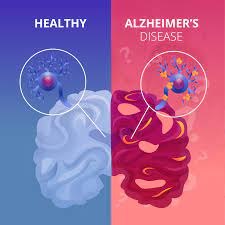Researchers Develop Cutting-Edge Technology to Target Protein Aggregation in Neurodegenerative Diseases
A groundbreaking antibody discovery platform has been developed, offering deeper insights into the mechanisms behind Alzheimer’s and Parkinson’s diseases. Researchers say this innovative approach could help better understand how specific proteins misfold and clump together, leading to brain cell damage.
Protein aggregation, the process by which proteins spontaneously clump, is a key feature of neurodegenerative diseases. Scientists have long faced challenges in characterizing these complex and often transient structures. Now, with this new method, they can generate aggregate-specific antibodies as precise probes or modulators of the aggregation process.
Antibodies are known for their ability to bind specifically to targets, making them a powerful tool for studying protein aggregation. However, developing antibodies against such dynamic and transient structures has been a significant challenge—until now. This platform integrates computational design and directed evolution to generate antibodies that can either bind to harmful aggregates or inhibit their formation.
“We can substantially speed up the process of discovery and production, which can save time and resources,” said Francesco Aprile, PhD, Associate Professor in Biological Chemistry at Imperial College London, who led the study.
Using this platform, Aprile and his team successfully developed single-domain antibodies, known as nanobodies, that can target intrinsically disordered proteins. Unlike typical proteins with well-defined structures, these proteins constantly change shape and self-assemble into toxic aggregates such as amyloid fibrils—a hallmark of Alzheimer’s disease.
The newly developed nanobodies can target different assemblies of amyloid-beta and alpha-synuclein, proteins closely linked to Alzheimer’s and Parkinson’s diseases, respectively. These nanobodies provide valuable insights into the formation of toxic protein oligomers.
“Our platform represents a significant advance in our ability to study protein self-assembly,” Aprile stated. “By efficiently generating nanobodies against these challenging targets, we can now delve deeper into the mechanisms underlying these processes and their role in disease.”
Significantly, the research has identified specific regions within amyloid-beta and alpha-synuclein that could serve as promising therapeutic targets. This discovery could open new doors for drug development, potentially leading to treatments that slow or prevent disease progression.
The Biophysical Society continues to play a vital role in fostering the development and dissemination of knowledge in biophysics, supporting pioneering research like this that could pave the way for future breakthroughs in neurodegenerative disease treatment.
Disclaimer: This article is for informational purposes only and does not constitute medical advice. Further research and clinical trials are needed to confirm the potential therapeutic applications of this discovery.











